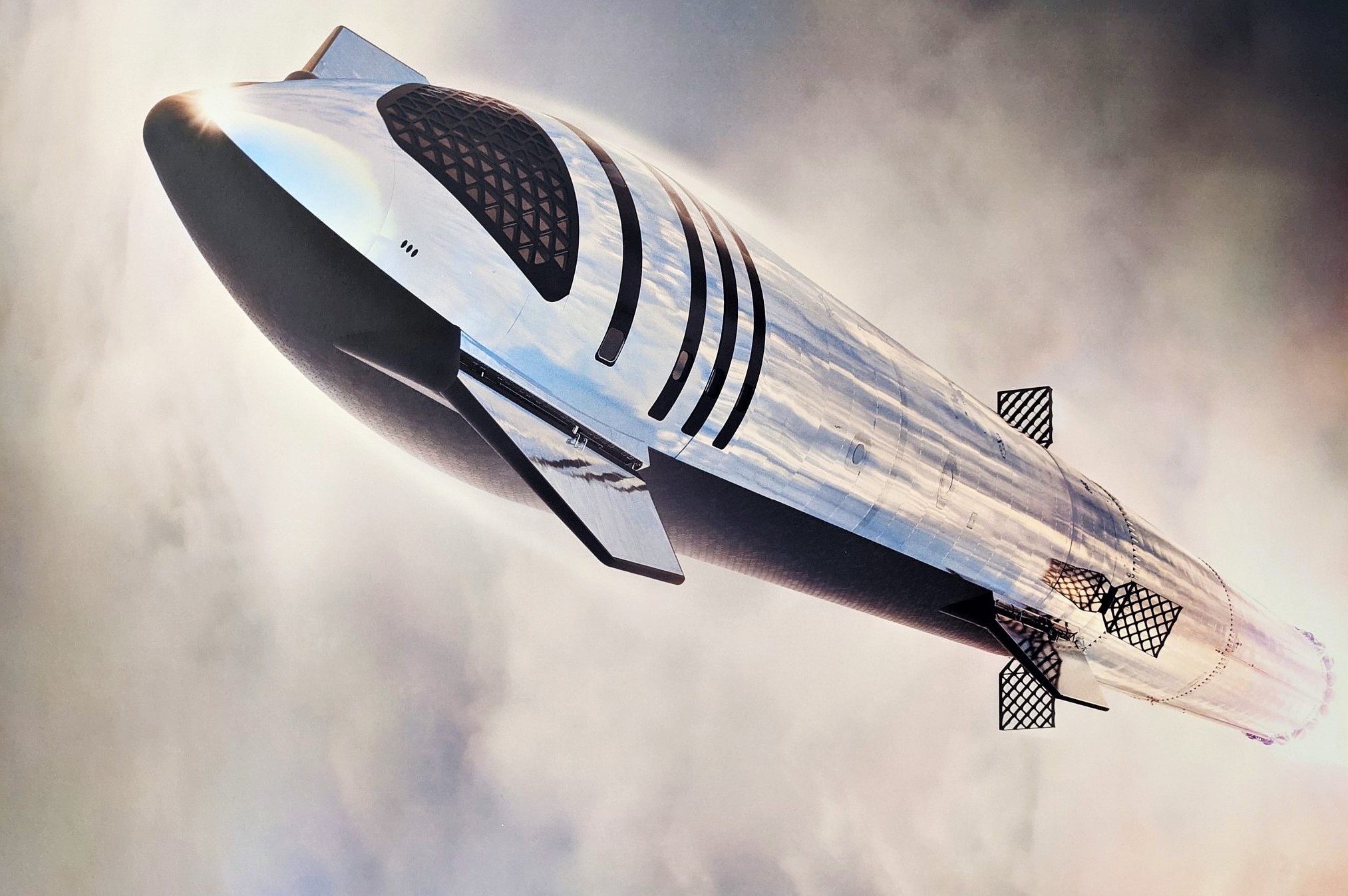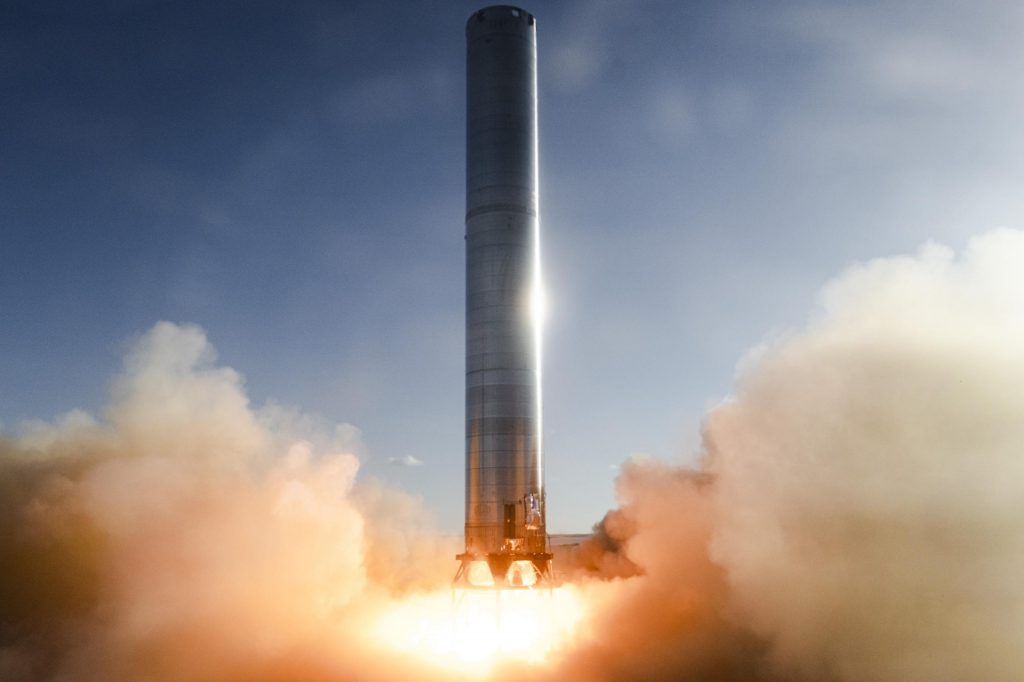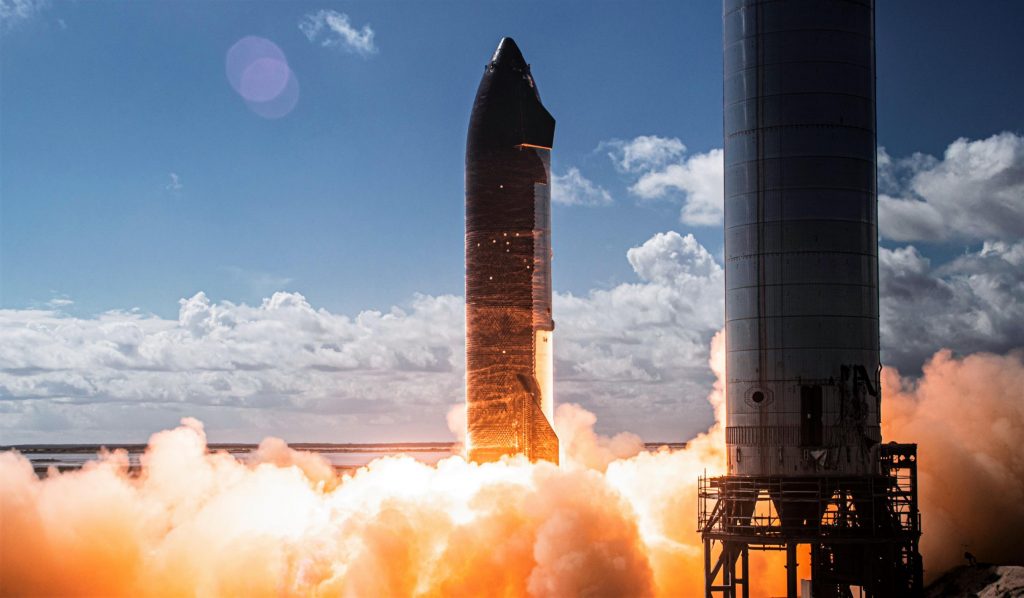

News
SpaceX CEO Elon Musk forecasts a dozen Starship launches next year
CEO Elon Musk has provided a small update on SpaceX’s next-generation Starship rocket in a brief statement to and Q&A with the board of the US National Academies of Science, Engineering, and Medicine.
While it’s now been more than two years since Musk last gave a proper presentation on the Starship program, a number of excellent questions from board members still managed to extract a handful of new details about the fully reusable rocket, which the SpaceX CEO says aims to “be a generalized transport mechanism for the [entire] solar system.” According to Musk, though, the most pressing near-term issues facing SpaceX are more down to Earth.
Reiterated several times in his comments to the National Academies, Musk says that the current limiting factor for Starship is securing regulatory approvals from the FAA for the rocket’s first orbital test flights, which SpaceX and Musk initially hoped would begin as early as mid-2021. Targets from July to November 2021 have since come and gone, while SpaceX has only begun to make concerted progress towards Starship’s first orbital launch in the last two or so months. Almost two months after its first rollout, Starship S20 – the first orbital-class prototype – began integrated testing, completing ambient and cryogenic proof tests in late September and its first Raptor preburner and static fire tests in the second half of October.
Most recently, after almost a month spent inactive at SpaceX’s Starbase test facilities, Starship S20 fired up all six of its Raptor engines – the first test of its kind and a major milestone for the program. Save for the completion of some relatively simple closeout tasks, Starship S20 is now more or less qualified for flight after its successful static fire. That leaves Super Heavy Booster 4 (B4) – the first stage meant to carry Ship 20 into space – up next on SpaceX’s South Texas testing docket after almost four agonizing months spent sitting, untested, at various Starbase facilities.
Musk says that SpaceX preparing to complete “a bunch of tests in December” with the implication that those tests likely include the first full Super Heavy wet dress rehearsal (WDR) with thousands of tons of live propellant and the first several booster static fire tests. Recently refitted with 29 Raptor engines for the third time in four months, it appears that SpaceX is finally close to finishing Super Heavy B4 to a point that will allow the booster to begin integrated testing. Through Super Heavy B3, which completed testing this summer, SpaceX thankfully already knows that the basic booster design is a structurally sound pressure vessel with plumbing and systems capable of surviving a three-Raptor static fire.

Still, that’s barely more than 10% of the total number of engines Super Heavy will need operational to send Starship to orbit. After months at the pad, SpaceX is finally closing out Booster 4’s aft section and installing a basic heat shield around its 29 Raptor engines, which will produce up to ~5400 metric tons (~12M lbf) of thrust at liftoff – more than any other rocket in history. Following Starship S20’s recent success, SpaceX has now fired six Raptors simultaneously and in close proximity without issue. However, Super Heavy B4 will have to fire 29 engines packed into roughly the same amount of space. No other liquid rocket stage in history has a more densely-packed thrust section, averaging at least 85 tons of thrust per square meter (~125 psi) of available engine space.
It’s thus likely that SpaceX will split Super Heavy B4’s first static fire campaign into several different parts, possibly involving seperate tests of the center cluster of nine Raptor Center (RC) engines and outer ring of 20 Raptor Boost (RB) engines before firing up all 29 together. Even if that testing is completed without issue on the first attempts, SpaceX will still likely want to perform a full wet dress rehearsal – and possibly even another 29-engine static fire – with Ship 20 installed on top of Booster 4.

Musk also believes that Starbase’s first orbital launch site will be complete as early as “later this month” – essential for full booster testing. Once all testing is complete, Musk says Starship, Super Heavy, and Starbase should be ready for their first orbital launch attempt as early as January or February 2022. Of course, that launch is entirely contingent upon FAA environmental approval and launch licensing, the former still incomplete and the latter unable to proceed until the former is complete. If the FAA reaches a favorable conclusion, meets its recently-announced target of December 31st to complete Starbase’s environmental review, and grants SpaceX a new launch license just days or a few weeks later, a January-February launch isn’t out of the question.
Looking further into 2022, Musk also revealed that he hopes SpaceX will complete “a dozen [Starship] launches” next year – incredibly ambitious by any measure. There isn’t a rocket in history that’s achieved double-digit launches in the same year as its debut. More importantly, even if the FAA environmental review SpaceX is in the middle of ends with the best possible outcome for Starship, it limits the company to either 3, 5, or 8 (it’s somewhat ambiguous) orbital launch attempts per year. Still, even a ‘mere’ three orbital Starship launch attempts in 2022 would be an incredible acheivement for SpaceX – let alone five, or Musk’s forecast of a dozen.
News
Tesla UK sales see 14% year-over-year rebound in June: SMMT data
The SMMT stated that Tesla sales grew 14% year-over-year to 7,719 units in June 2025.

Tesla’s sales in the United Kingdom rose in June, climbing 14% year-over-year to 7,719 units, as per data from the Society of Motor Manufacturers and Traders (SMMT). The spike in the company’s sales coincided with the first deliveries of the updated Model Y last month.
Model Y deliveries support Tesla’s UK recovery
Tesla’s June performance marked one of its strongest months in the UK so far this year, with new Model Y deliveries contributing significantly to the company’s momentum.
While the SMMT listed Tesla with 7,719 deliveries in June, independent data from New AutoMotive suggested that the electric vehicle maker registered 7,891 units during the month instead. However, year-to-date figures for Tesla remain 2% down compared to 2024, as per a report from Reuters.
While Tesla made a strong showing in June, rivals are also growing. Chinese automaker BYD saw UK sales rise nearly fourfold to 2,498 units, while Ford posted the highest EV growth among major automakers, with a more than fourfold increase in the first half of 2025.
Overall, the UK’s battery electric vehicle (BEV) demand surged 39% to to 47,354 units last month, helping push total new car sales in the UK to 191,316 units, up 6.7% from the same period in 2024.
EV adoption accelerates, but concerns linger
June marked the best month for UK car sales since 2019, though the SMMT cautioned that growth in the electric vehicle sector remains heavily dependent on discounting and support programs. Still, one in four new vehicle buyers in June chose a battery electric vehicle.
SMMT Chief Executive Mike Hawes noted that despite strong BEV demand, sales levels are still below regulatory targets. “Further growth in sales, and the sector will rely on increased and improved charging facilities to boost mainstream electric vehicle adoption,” Hawes stated.
Also taking effect this week was a new US-UK trade deal, which lowers tariffs on UK car exports to the United States from 27.5% to 10%. The agreement could benefit UK-based EV producers aiming to expand across the country.
News
Tesla Model 3 ranks as the safest new car in Europe for 2025, per Euro NCAP tests
Despite being on the market longer than many of its rivals, the Tesla Model 3 continues to set the bar for vehicle safety.

The Tesla Model 3 has been named the safest new car on sale in 2025, according to the latest results from the Euro NCAP. Among 20 newly tested vehicles, the Model 3 emerged at the top of the list, scoring an impressive 359 out of 400 possible points across all major safety categories.
Tesla Model 3’s safety systems
Despite being on the market longer than many of its rivals, the Tesla Model 3 continues to set the bar for vehicle safety. Under Euro NCAP’s stricter 2025 testing protocols, the electric sedan earned 90% for adult occupant protection, 93% for child occupant protection, 89% for pedestrian protection, and 87% for its Safety Assist systems.
The updated Model 3 received particular praise for its advanced driver assistance features, including Tesla’s autonomous emergency braking (AEB) system, which performed well across various test scenarios. Its Intelligent Speed Assistance and child presence detection system were cited as noteworthy features as well, as per a WhatCar report.
Other notable safety features include the Model 3’s pedestrian-friendly pop-up hood and robust crash protection for both front and side collisions. Euro NCAP also highlighted the Model 3’s ability to detect vulnerable road users during complex maneuvers, such as turning across oncoming traffic.
Euro NCAP’s Autopilot caution
While the Model 3’s safety scores were impressive across the board, Euro NCAP did raise concerns about driver expectations of Tesla’s Autopilot system. The organization warned that some owners may overestimate the system’s capabilities, potentially leading to misuse or inattention behind the wheel. Even so, the Model 3 remained the highest-scoring vehicle tested under Euro NCAP’s updated criteria this year.
The Euro NCAP’s concerns are also quite interesting because Tesla’s Full Self-Driving (FSD) Supervised, which is arguably the company’s most robust safety suite, is not allowed for public rollout in Europe yet. FSD Supervised would allow the Model 3 to navigate inner city streets with only minimal human supervision.
Other top scorers included the Volkswagen ID.7, Polestar 3, and Geely EX5, but none matched the Model 3’s total score or consistency across categories. A total of 14 out of 20 newly tested cars earned five stars, while several models, including the Kia EV3, MG ZS, and Renault 5, fell short of the top rating.
Elon Musk
Why Tesla’s Q3 could be one of its biggest quarters in history
Tesla could stand to benefit from the removal of the $7,500 EV tax credit at the end of Q3.

Tesla has gotten off to a slow start in 2025, as the first half of the year has not been one to remember from a delivery perspective.
However, Q3 could end up being one of the best the company has had in history, with the United States potentially being a major contributor to what might reverse a slow start to the year.
Earlier today, the United States’ House of Representatives officially passed President Trump’s “Big Beautiful Bill,” after it made its way through the Senate earlier this week. The bill will head to President Trump, as he looks to sign it before his July 4 deadline.
The Bill will effectively bring closure to the $7,500 EV tax credit, which will end on September 30, 2025. This means, over the next three months in the United States, those who are looking to buy an EV will have their last chance to take advantage of the credit. EVs will then be, for most people, $7,500 more expensive, in essence.
The tax credit is available to any single filer who makes under $150,000 per year, $225,000 a year to a head of household, and $300,000 to couples filing jointly.
Ending the tax credit was expected with the Trump administration, as his policies have leaned significantly toward reliance on fossil fuels, ending what he calls an “EV mandate.” He has used this phrase several times in disagreements with Tesla CEO Elon Musk.
Nevertheless, those who have been on the fence about buying a Tesla, or any EV, for that matter, will have some decisions to make in the next three months. While all companies will stand to benefit from this time crunch, Tesla could be the true winner because of its sheer volume.
If things are done correctly, meaning if Tesla can also offer incentives like 0% APR, special pricing on leasing or financing, or other advantages (like free Red, White, and Blue for a short period of time in celebration of Independence Day), it could see some real volume in sales this quarter.
You can now buy a Tesla in Red, White, and Blue for free until July 14 https://t.co/iAwhaRFOH0
— TESLARATI (@Teslarati) July 3, 2025
Tesla is just a shade under 721,000 deliveries for the year, so it’s on pace for roughly 1.4 million for 2025. This would be a decrease from the 1.8 million cars it delivered in each of the last two years. Traditionally, the second half of the year has produced Tesla’s strongest quarters. Its top three quarters in terms of deliveries are Q4 2024 with 495,570 vehicles, Q4 2023 with 484,507 vehicles, and Q3 2024 with 462,890 vehicles.
-

 Elon Musk4 days ago
Elon Musk4 days agoTesla investors will be shocked by Jim Cramer’s latest assessment
-

 News1 week ago
News1 week agoTesla Robotaxi’s biggest challenge seems to be this one thing
-

 Elon Musk2 weeks ago
Elon Musk2 weeks agoFirst Look at Tesla’s Robotaxi App: features, design, and more
-

 News2 weeks ago
News2 weeks agoSpaceX and Elon Musk share insights on Starship Ship 36’s RUD
-

 News2 weeks ago
News2 weeks agoWatch Tesla’s first driverless public Robotaxi rides in Texas
-

 News1 week ago
News1 week agoWatch the first true Tesla Robotaxi intervention by safety monitor
-

 News2 weeks ago
News2 weeks agoTesla has started rolling out initial round of Robotaxi invites
-

 Elon Musk2 weeks ago
Elon Musk2 weeks agoTesla to launch in India in July with vehicles already arriving: report

















